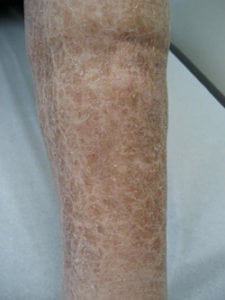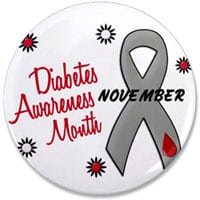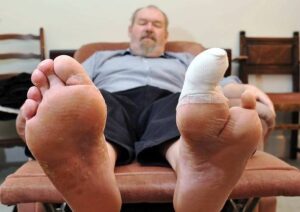Introduction
This post provides diabetic skin care tips!
In the previous Straight, No Chaser, we discussed the frailty of diabetic skin and discussed how that sets one up for skin infections, abscesses, ulcers, amputations and even death. Your best defense from these set of illnesses and tragedies is knowledge, prevention and prompt action. Here are some steps you can take to better care for the diabetic in your life. In the event you know a diabetic who appears healthy, I want you to pay special attention to him/her. Diabetes is a chronic and insidious disease. These changes occur over years, and your challenge is to slow the process down as long as possible.
If you have diabetes, these tips may help prevent skin damage and infections:
Diabetic Skin Care Tips 1-5
1. Do the best you can to control your blood glucose levels. The more out of control it is, the more damage it causes.
2. You must check your feet every single day for the rest of your life. Diabetics develop decreased sensitivity to their feet. It is extremely common to step on a sharp object and not realize that you’ve done so. A splinter or nail is an excellent medium for an infection.
3. Eat fruits and vegetables. Your skin needs all the nourishment it can get.

4. Develop better hygiene. Wash and dry your skin often and thoroughly; this will keep you less exposed to infections.
5. Make a point of keeping your groin, armpits and other areas prone to heavy sweat dry. Those moist areas in particular are most prone to becoming infected. Talcum powder is a good choice to use.
Diabetic Skin Care Tips 6-10
6. Stay hydrated. It’s an uphill battle with the frequent urination and high blood sugar (glucose) levels. Dehydration causes your skin to be more brittle and prone to infections.
7. Stay moisturized! Apply lotion early and often, especially after baths. Note those dry, cracked feet and get ahead of that happening if possible.

8. Remember: if you’re diabetic, at some point your hands will retain sensation longer than your finger. It’s common to see scald injuries from stepping in water hot enough to burn you without you feeling it initially. Check the water with your hands before stepping into a tub.
9. Use a milder, less irritating soaps that includes moisturizer. Speaking of tubs, avoid bubble baths. Sorry.
10. Consider investing in a humidifier to prevent skin drying, especially in dry or cold climates.

Diabetic Skin Care Tips 11-15
11. Always take any skin wounds seriously, especially those on your feet. Avoid placing alcohol on any of your wounds.
12. Invest in some sterile gauze. If you develop a scratch or other wound, control the wound with it after cleaning.
13. Limit your self-help to cleaning and gauze wrapping. Only place topical antibiotics or take antibiotics for a skin infection under your physician’s supervision.
14. Always ask your physician to check your skin during an examination and ask him/her to teach you what to look for.
15. Immediately consult your physician or access the local emergency room if you have a burn, scratch, abscess (boil) or laceration that seems serious.
Follow us!
Ask your SMA expert consultant any questions you may have on this topic. Also, take the #72HoursChallenge, and join the community. Additionally, as a thank you, we’re offering you a complimentary 30-day membership at www.72hourslife.com. Just use the code #NoChaser, and yes, it’s ok if you share!
Order your copy of Dr. Sterling’s books There are 72 Hours in a Day: Using Efficiency to Better Enjoy Every Part of Your Life and The 72 Hours in a Day Workbook: The Journey to The 72 Hours Life in 72 Days at Amazon or at www.jeffreysterlingbooks.com. Another free benefit to our readers is introductory pricing with multiple orders and bundles!
Thanks for liking and following Straight, No Chaser! This public service provides a sample of http://www.SterlingMedicalAdvice.com (SMA) and 844-SMA-TALK. Likewise, please share our page with your friends on WordPress! Also like us on Facebook @ SterlingMedicalAdvice.com! Follow us on Twitter at @asksterlingmd.
Copyright © 2018 · Sterling Initiatives, LLC · Powered by WordPress



































